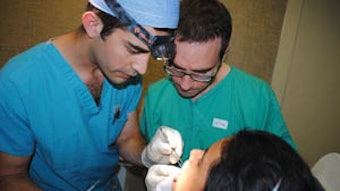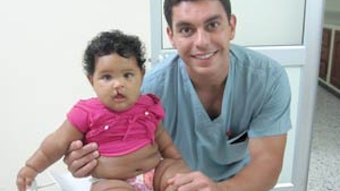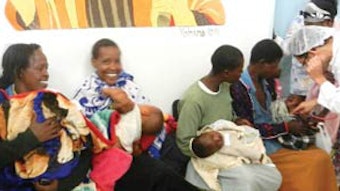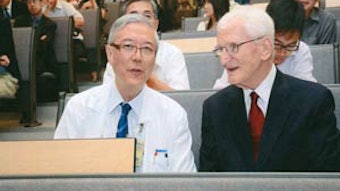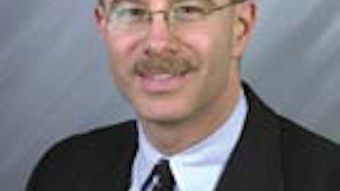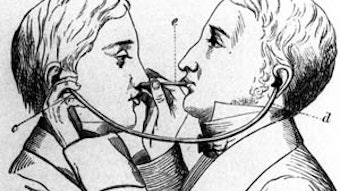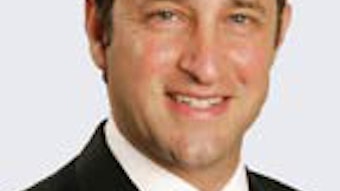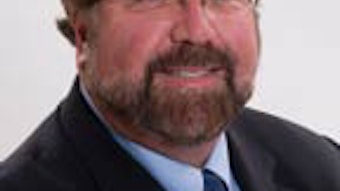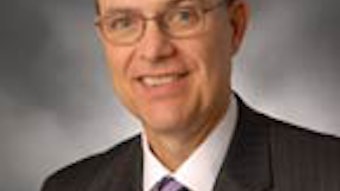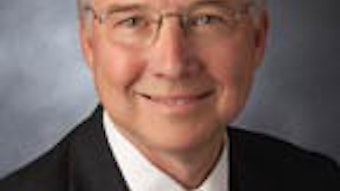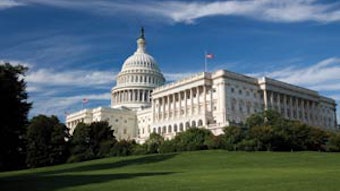Patient Management Perspectives in Otolaryngology: New Name, Same Patient Focus
Daniel J. Kirse, MD, Editor, Patient Management Perspectives in Otolaryngology Professor and Vice-Chair Department of Otolaryngology-Head and Neck Surgery, Wake Forest University School of Medicine The Patient of the Month Program (PMP) began at the AAO-HNSF in 1971 and has published 41 volumes and more than 300 individual issues under the leadership of several editors, including William W. Shockley, MD, Charles M. Myer, MD, and J. Dale Browne, MD, along with countless volunteer expert authors and reviewers. I have had the pleasure of serving as editor since 2008. The Foundation has been working with Decker Publishing on this official Academy publication since 1988. During a 40-year period, PMP has evolved into a Foundation standard offering otolaryngologists the opportunity to hone decision-making skills and improve patient care. Published eight times a year, PMP guides the reader through the full management of an individual patient from evaluation to diagnosis, treatment, and outcomes in an interactive question-and-answer format with immediate feedback from expert authors. Each issue addresses a critical and timely clinical case study in one of the eight specialty areas of otolaryngology, authored by the talented and dedicated members of the Foundation education committees. In order to emphasize the patient focus and to better reflect the goal of the publication, the name has been changed to Patient Management Perspectives in Otolaryngology, still affectionately known as PMP. The first volume with the new title began in fall 2011 with an issue on “Adult with Acute Laryngeal Trauma.” A free copy of this issue can be found with this month’s Bulletin for members to see what a wonderful education resource PMP can be and to encourage your subscription today. The primary audience for PMP is physicians and physicians-in-training who specialize in otolaryngology. Overall outcome objectives for the activity are to increase knowledge of the most current research advances and medical practices in otolaryngology; maintain greater competence in performing diagnostic and treatment measures to provide quality service to patients; and improve practice skills, abilities, and strategies for high-quality, evidence-based standards of otolaryngology healthcare delivery. PMP is available in both print and digital delivery formats. However, I must admit, while the print version is convenient, the online version offers a much richer education experience through the expert use of multimedia. I encourage you to consider subscribing to the online version today. I hope you enjoy this free look at one of the Foundation’s oldest and most popular education products. With the name change comes a renewed sense of dedication to PMP through focused and timely content critical to the evolving field of otolaryngology practice. For more information or to subscribe, visit www.deckerpublishing.com, email customercare@deckerpublishing.com or call toll-free 855-647-6511. Visit www.deckerpublishing.com/pmp/ for a demo of the highly interactive online format.
Daniel J. Kirse, MD, Editor, Patient Management Perspectives in Otolaryngology Professor and Vice-Chair Department of Otolaryngology-Head and Neck Surgery, Wake Forest University School of Medicine
 Daniel J. Kirse, MD
Daniel J. Kirse, MDThe Patient of the Month Program (PMP) began at the AAO-HNSF in 1971 and has published 41 volumes and more than 300 individual issues under the leadership of several editors, including William W. Shockley, MD, Charles M. Myer, MD, and J. Dale Browne, MD, along with countless volunteer expert authors and reviewers. I have had the pleasure of serving as editor since 2008. The Foundation has been working with Decker Publishing on this official Academy publication since 1988.
During a 40-year period, PMP has evolved into a Foundation standard offering otolaryngologists the opportunity to hone decision-making skills and improve patient care. Published eight times a year, PMP guides the reader through the full management of an individual patient from evaluation to diagnosis, treatment, and outcomes in an interactive question-and-answer format with immediate feedback from expert authors. Each issue addresses a critical and timely clinical case study in one of the eight specialty areas of otolaryngology, authored by the talented and dedicated members of the Foundation education committees.
In order to emphasize the patient focus and to better reflect the goal of the publication, the name has been changed to Patient Management Perspectives in Otolaryngology, still affectionately known as PMP. The first volume with the new title began in fall 2011 with an issue on “Adult with Acute Laryngeal Trauma.” A free copy of this issue can be found with this month’s Bulletin for members to see what a wonderful education resource PMP can be and to encourage your subscription today.
The primary audience for PMP is physicians and physicians-in-training who specialize in otolaryngology. Overall outcome objectives for the activity are to increase knowledge of the most current research advances and medical practices in otolaryngology; maintain greater competence in performing diagnostic and treatment measures to provide quality service to patients; and improve practice skills, abilities, and strategies for high-quality, evidence-based standards of otolaryngology healthcare delivery.
PMP is available in both print and digital delivery formats. However, I must admit, while the print version is convenient, the online version offers a much richer education experience through the expert use of multimedia. I encourage you to consider subscribing to the online version today.
I hope you enjoy this free look at one of the Foundation’s oldest and most popular education products. With the name change comes a renewed sense of dedication to PMP through focused and timely content critical to the evolving field of otolaryngology practice.
For more information or to subscribe, visit www.deckerpublishing.com, email customercare@deckerpublishing.com or call toll-free 855-647-6511.
Visit www.deckerpublishing.com/pmp/ for a demo of the highly interactive online format.
